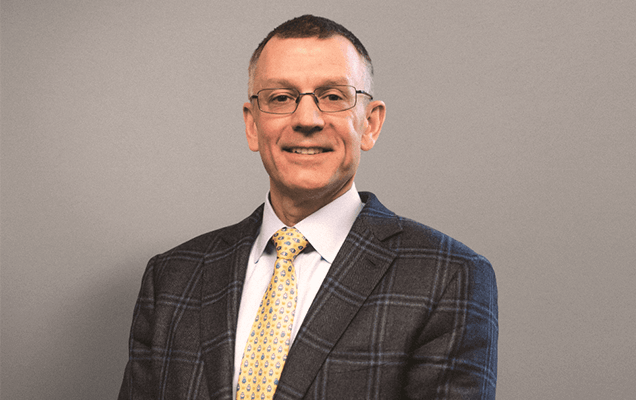Cervical spinal stenosis is a condition that involves discomfort caused by the compression of your spinal cord. The cervical spinal canal is a tube within the bones of your neck that contains the spinal cord. The spinal canal can be narrowed by bone spurs, thickened ligaments or a herniated disc. Whatever the cause, this narrowing can squeeze your nerve and cause neurological symptoms such as pain, weakness, numbness, and poor balance. Spinal stenosis can be especially dangerous in the cervical region because if left untreated, it can cause severe body weakness and even paralysis.
Fortunately, cervical spinal stenosis surgery can help relieve your symptoms and reduce your risk for progression of your symptoms. If you decide to undergo surgery, however, you may have questions and concerns about your recovery. Although the exact procedure you undergo — and thus the specifics of your recovery — will depend on your particular condition, operations can involve two steps: decompression and stabilization. Decompression may come in the form of a laminectomy or discectomy, both of which expand the space surrounding the spinal cord. Stabilization will be accomplished with a spinal fusion, in which a bone graft is used to fuse your vertebra. Not all patients who undergo decompression will need stabilization, so by discussing your condition with your doctor, you can better understand your needs and the expected course of your recovery.
The following is an overview of the typical timeline for cervical spinal stenosis surgery recovery so that you can feel more comfortable about your treatment experience and more confident about the long-term health of your spine.
Cervical Spinal Stenosis Surgery Recovery
Days 1–3
On the day of your cervical spinal stenosis surgery, as well as the day after, the main goal will be rest. A nurse will attend to you and monitor your vital signs, motor control and circulation. Within 24 hours of the operation, you will walk with the assistance of a nurse or physical therapist. Gradually over the course of the first three days, you will increase your activity, walking short distances under supervision. You will have access to pain medicine, sometimes in the form of patient-controlled analgesia (PCA), meaning that you can press a button to deliver yourself a dose of analgesia whenever you feel pain.
You can begin eating immediately after surgery; however, your digestive system slows down after anesthesia and in response to pain medication, so your appetite may not be great and you may be constipated.
If your surgery has involved a spinal fusion, you will likely be wearing a brace to make sure that your neck is undisturbed while it heals. Whether you are allowed to leave the hospital after just one or two days or whether in-patient rehabilitation is needed depends a lot on the size of your surgery and your neurological condition.
Days 4–7
Pain is to be expected throughout the first several days after you are discharged. For this reason, you will be prescribed oral painkillers to take as needed. Showering is permitted around day four as long as you protect your surgical incision according to your doctor’s instructions. As a safety precaution, it’s a good idea to have a friend or family member accessible throughout your first few weeks at home.
Around this time you may also begin a light physical therapy regimen, as your doctor sees fit. This will consist of exercises to further develop your mobility and independence, such as deep breathing to improve your lung capacity and regular walking.
It's time to get back
to doing what you love.
Weeks 2–4
Throughout the first few weeks after your cervical spinal stenosis surgery, you can expect your mobility to increase and your pain and swelling to decrease. After two to four weeks, most patients return to work or school and find that they no longer need their prescribed pain medications. However, be careful with your movement and let pain be your guide. Certain activities like driving, bending, twisting and lifting will be restricted.
It’s also helpful to avoid sitting for prolonged periods of time. Too much activity can harm a healing spine, but so can too little. Your doctor will work with you to devise an appropriate timeline for your return to activity.
Months 2–6
A full recovery typically occurs between two and six months after cervical spinal stenosis surgery. This can depend, however, on whether you underwent a bone fusion. Recovery from a decompression alone is usually quicker than from a decompression with stabilization. This is because it can take up to a year for a bone graft to properly fuse. For this reason, your doctor may advise you to avoid contact sports and other strenuous activities, to allow your neck to completely heal.
Months 6–24
Months six through 24 are usually only a concern for those who underwent a stabilization procedure. All throughout your recovery, your doctor will monitor the progress of your bone fusion using x-rays. Fusion is expected to be complete by one year after the operation, but your doctor may continue to check in beyond that point to ensure that the spine is in good condition. Spinal fusions are complete after 6-18 months and neurological improvement from spinal cord decompression can continue for up to two years.
Final Thoughts
Cervical spinal stenosis surgery recovery can be a long process, but if you diligently follow your doctor’s advice, you drastically improve your chances of a complete return to activity. Use this overview to give yourself an idea of the road ahead, and never hesitate to talk with your doctor about any questions or doubts you may have.

About Dr. Michael G. Kaiser
Dr. Michael G. Kaiser is a nationally recognized neurosurgeon in North Jersey and is a proud member of Neurosurgeons of New Jersey, practicing out of their Ridgewood office conveniently located on East Ridgewood Avenue. Dr. Kaiser specializes in complex and minimally invasive spine surgeries.
Recent Posts:









